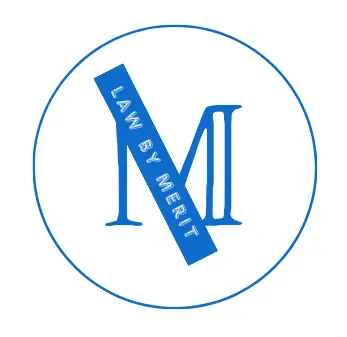Placing a lien on someone’s property is a legal process that involves securing a claim against the property to ensure payment of a debt or obligation. Understanding the various types of liens, the process for placing them, and their implications is essential for both creditors and property owners.
To legally put a lien on someone’s property, there are typically two main avenues: through a court judgment or by agreement through a contract or other legal instrument. Let’s delve into each method in detail:
1. Obtaining a Lien Through Court Judgment:
This method involves going through the legal system to obtain a judgment against the property owner. Here’s a step-by-step guide:
a. File a Lawsuit: To initiate the process, you need to file a lawsuit against the property owner. This could be for various reasons such as unpaid debts, damages, or breach of contract. You’ll need to present evidence supporting your claim.
b. Litigation Process: Once the lawsuit is filed, the litigation process begins. This involves discovery, where both parties gather evidence, and potentially mediation or settlement negotiations. If a settlement cannot be reached, the case will proceed to trial.
c. Trial and Judgment: At trial, both parties present their case, and the judge or jury will make a decision based on the evidence presented. If the court rules in your favor and awards you damages, you will receive a judgment against the property owner.
d. Obtaining a Lien: With the judgment in hand, you can then obtain a lien on the property. This typically involves filing the judgment with the county recorder’s office where the property is located. Once recorded, the judgment becomes a lien against the property, which means the property cannot be sold or refinanced without satisfying the debt owed to you.
e. Enforcing the Lien: If the property owner still fails to satisfy the debt, you may have the option to foreclose on the property to force the sale and collect your money.
2. Agreement Through Contract or Legal Instrument:
In some cases, you may be able to obtain a lien through an agreement with the property owner. This could be through a contract, such as a mortgage or loan agreement, or through another legal instrument. Here’s how it works:
a. Negotiate Terms: You and the property owner negotiate the terms of the agreement, which may include a provision for a lien on the property in the event of default.
b. Drafting the Agreement: Once the terms are agreed upon, the agreement is drafted, typically by an attorney. The agreement should clearly outline the conditions under which a lien can be placed on the property, such as non-payment of a debt.
c. Signing and Execution: Both parties sign the agreement, and it is executed according to the relevant legal requirements. This could involve notarization or witnessing, depending on the jurisdiction.
d. Enforcing the Lien: If the property owner defaults on the agreement, you can then enforce the lien according to the terms outlined in the agreement. This may involve filing paperwork with the appropriate authorities to officially place the lien on the property.
e. Legal Recourse: If necessary, you can take legal action to enforce the lien and collect the debt owed to you. This could include foreclosure proceedings or other legal remedies available under the terms of the agreement.
In either method, it’s essential to follow all legal procedures carefully to ensure that the lien is valid and enforceable. Consulting with a qualified attorney who specializes in real estate law can help ensure that you navigate the process correctly.
3. Mechanic’s Lien:
Mechanic’s liens are specific to construction projects and are designed to protect contractors, subcontractors, and suppliers who have not been paid for work or materials provided for improving real property. Here’s a comprehensive breakdown:
a. Understanding Mechanic’s Liens: Mechanic’s liens are a legal claim against a property that arises when a contractor, subcontractor, or supplier provides labor or materials for improvements to the property but is not paid for their work.
b. Notice Requirements: In many jurisdictions, those who wish to assert a mechanic’s lien must provide notice to the property owner, general contractor, or other relevant parties within a certain timeframe after beginning work or providing materials. This notice typically informs them of the intention to file a lien if payment is not received.
c. Filing the Lien: If payment is not received as agreed upon, the contractor or supplier can file a mechanic’s lien with the appropriate government office, such as the county recorder’s office. This filing places a legal claim against the property, essentially encumbering it until the debt is satisfied.
d. Enforcing the Lien: Once the lien is filed, the property owner may have a certain amount of time to respond or contest the lien. If the debt remains unpaid, the lienholder may have the option to enforce the lien through a foreclosure action, forcing the sale of the property to satisfy the debt.
e. Release of Lien: Once the debt is paid or otherwise resolved, the lienholder must release the lien. This typically involves filing a release of lien with the same government office where the lien was filed.
4. Tax Lien:
Tax liens are imposed by government agencies, typically for unpaid taxes, and can result in the seizure and sale of the property to satisfy the debt. Here’s a detailed explanation of this process:
a. Tax Assessment and Notice: When a property owner fails to pay property taxes, income taxes, or other taxes owed to the government, the taxing authority may impose a tax lien on the property. The property owner is usually notified of the delinquency and given an opportunity to pay the outstanding taxes.
b. Filing the Tax Lien: If the taxes remain unpaid after the specified period, the taxing authority can file a tax lien against the property. This is typically done by recording the lien with the county recorder’s office or a similar government agency, thereby creating a legal claim against the property.
c. Effect of the Tax Lien: A tax lien effectively encumbers the property, making it difficult for the property owner to sell or refinance the property without first satisfying the tax debt.
d. Enforcement of the Lien: If the tax debt remains unpaid, the taxing authority may proceed with enforcement actions, which could include seizing and selling the property through a tax sale or auction. The proceeds from the sale are used to satisfy the tax debt, with any excess funds returned to the property owner.
e. Redemption Period: In some jurisdictions, property owners may have a redemption period during which they can pay the delinquent taxes and any associated fees to reclaim their property before it is sold at auction.
By understanding these additional methods of placing a lien on someone’s property, individuals and entities can navigate the legal process effectively while ensuring their rights are protected.
FREQUENTLY ASKED QUESTIONS
1. What is a lien, and how does it work?
A lien is a legal claim or right against a property that secures the payment of a debt or obligation. It allows the creditor to take legal action to seize the property or force its sale if the debt is not satisfied. Liens can be placed on real property, such as homes or land, as well as personal property, like vehicles or equipment. Liens typically arise from unpaid debts, judgments, taxes, or contractual obligations.
2. What are the different types of liens that can be placed on property?
There are several types of liens that can be placed on property, including:
– Judgment Liens: Arise from court judgments in favor of a creditor.
– Mechanic’s Liens: Apply to construction projects when contractors, subcontractors, or suppliers are not paid for their work or materials.
– Tax Liens: Imposed by government agencies for unpaid taxes.
– Mortgage Liens: Secures a loan for the purchase of real property.
– Equitable Liens: Arise from equitable principles rather than statute, often related to disputes over property ownership or use.
3. What is the process for placing a lien on someone’s property?
The process for placing a lien on someone’s property varies depending on the type of lien and jurisdiction. Generally, it involves initiating legal action, such as filing a lawsuit, obtaining a judgment, and then recording the judgment with the appropriate government office. For mechanic’s liens, there may be additional notice requirements and specific procedures for filing the lien. Tax liens are typically imposed by the relevant taxing authority after a period of delinquency.
4. What are the consequences of having a lien placed on my property?
Having a lien placed on your property can have several consequences, including:
– Restrictions on Property Transactions: A lien can prevent you from selling or refinancing the property until the debt is satisfied.
– Potential Legal Action: The lienholder may have the right to take legal action to enforce the lien, such as foreclosing on the property or forcing its sale.
– Negative Impact on Credit: Liens can negatively impact your credit score and make it more difficult to obtain financing or credit in the future.
5. How can I remove a lien from my property?
The process for removing a lien from your property depends on the type of lien and the circumstances. Generally, you can remove a lien by satisfying the underlying debt or obligation that led to the lien being placed. This may involve paying off the debt, reaching a settlement with the lienholder, or challenging the validity of the lien through legal means. Once the debt is resolved, the lienholder must typically file a release of lien with the relevant government office to remove the lien from the property.
Last updated on: April 29, 2024




